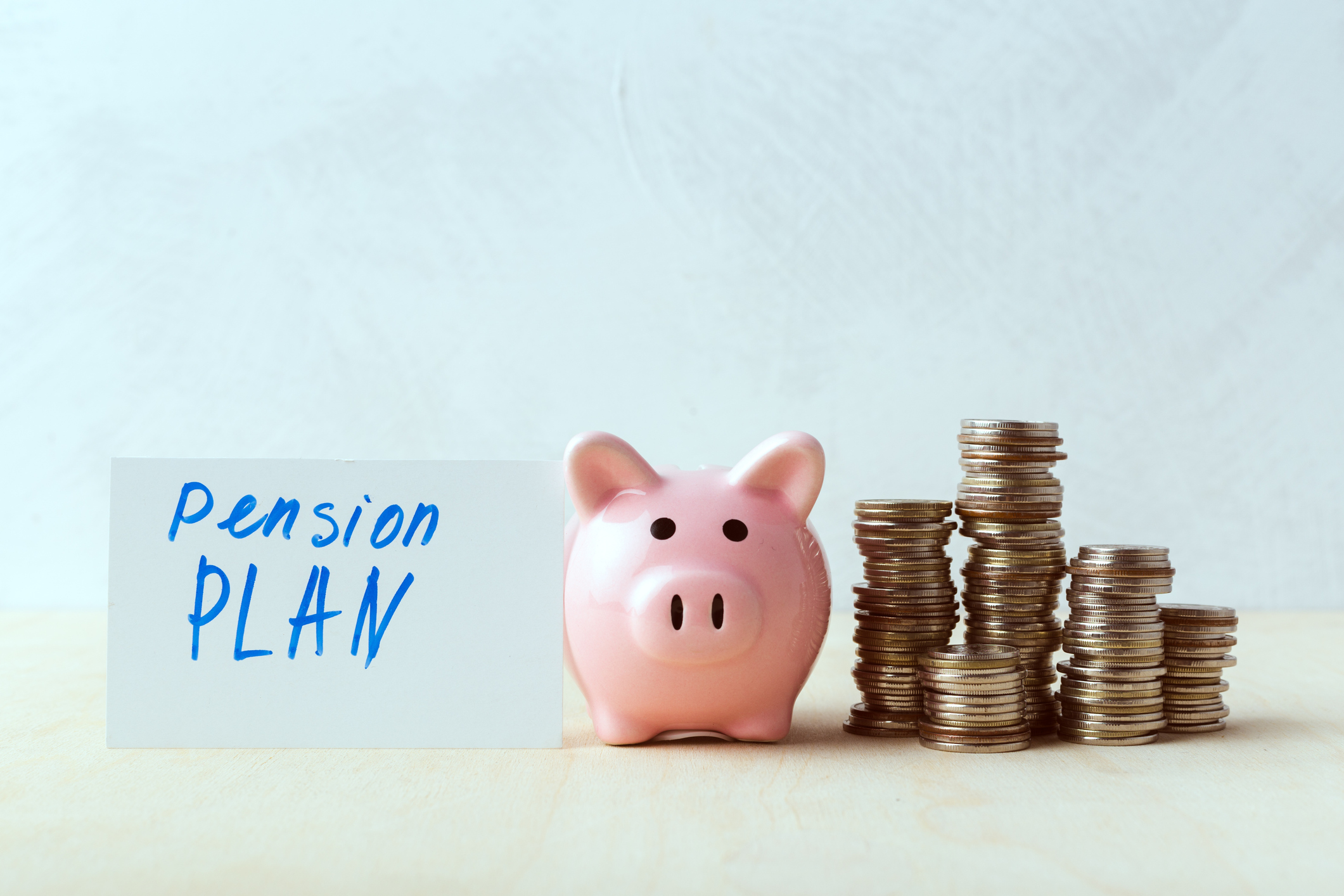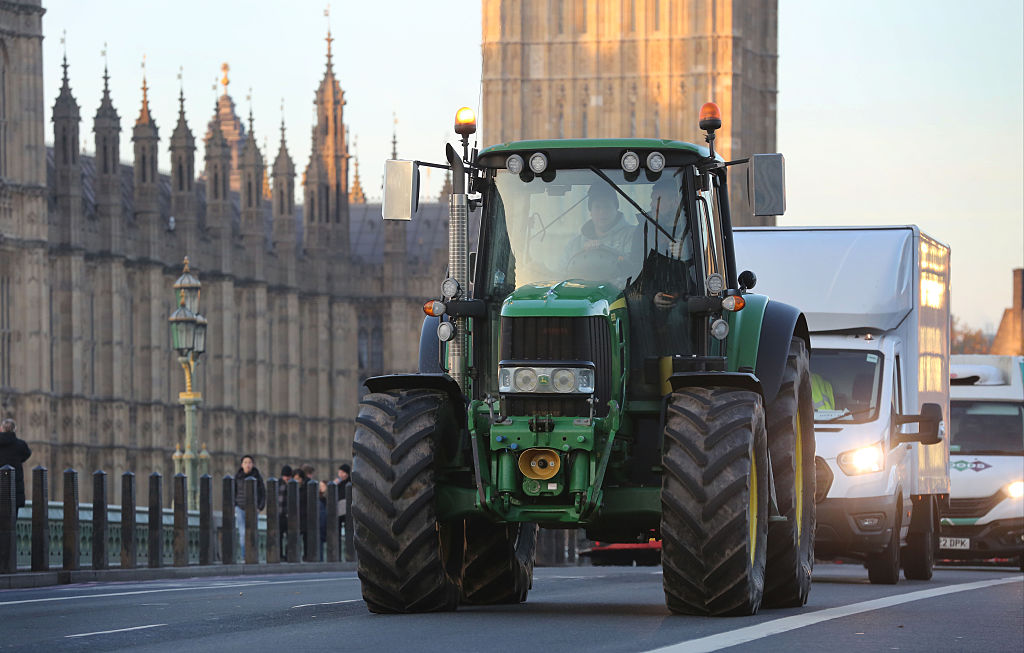What is the 25% pension tax-free cash - and when should you take it?
There’s plenty of speculation that the 25% tax-free cash savers can take from their pension pots could be cut in the forthcoming Autumn Budget. But, what is it and how does it work?


Speculation is growing that chancellor Rachel Reeves could make changes to the 25% pension tax-free cash in her Autumn Budget.
The rumours have led to a surge in pension savers grabbing their tax-free cash in case the chancellor reduces the 25% incentive, but HMRC is warning that it’s not possible to reverse such a withdrawal if you change your mind later.
Nick Nesbitt, head of private client at the advisory firm Forvis Mazars, comments: “We’re seeing a real uptick in clients accessing their pension tax-free cash.”
MoneyWeek
Subscribe to MoneyWeek today and get your first six magazine issues absolutely FREE

Sign up to Money Morning
Don't miss the latest investment and personal finances news, market analysis, plus money-saving tips with our free twice-daily newsletter
Don't miss the latest investment and personal finances news, market analysis, plus money-saving tips with our free twice-daily newsletter
The pension provider Royal London says it has seen an increase in customers asking about taking tax-free cash as a result of Budget rumours.
Meanwhile, two pension experts - Tom McPhail, who runs the Pensions Monkey podcast, and Stephen Lowe, director of Just Group - said on X recently they were considering taking their tax-free cash (TFC) early. McPhail said “I’m seriously considering bringing forward my TFC withdrawal ahead of the Budget”, and Lowe replied: “Ditto”.
The rush to withdraw tax-free cash follows a frenzy last year when savers also worried that Reeves would cut the popular pension perk in the 2024 Budget.
Tax-free withdrawals surged to £18 billion in 2024/25, up from £11 billion the year before, marking a 61% increase, according to FCA data obtained by wealth management firm Evelyn Partners.
In the end, there was no announcement about tax-free cash. This year’s Budget will take place on 26 November, and there are already plenty of rumours about potential tax hikes. This could include raising capital gains tax, introducing new property taxes and inheritance tax reforms, as well as changes to pensions.
However, it’s important to point out that most experts think it’s unlikely that Reeves will cut tax-free cash in the Autumn Budget, as it’s a popular and well-understood pension perk. While the Telegraph reported that it was an option being considered by the Treasury, a Whitehall official reportedly said the reform was “unlikely”.
Let’s look at what HMRC has said about pension savers hoping to cancel a tax-free cash withdrawal, and we’ll also explain what “25% tax-free cash” means. Does this relate to all pensions? When can you take it? And what happens to the other 75%?
We explain everything you need to know about the 25% pension tax-free cash, including some pros and cons of when to take it. Hint: the longer you leave it, the bigger the tax-free lump sum you could end up with.
HMRC’s pre-Budget tax-free cash warning
HMRC has warned pension schemes that taking tax-free cash cannot be reversed.
The tax department’s latest newsletter, published on 25 September, confirmed that people cannot unwind tax-free cash withdrawals or else they could face a tax charge.
“Once lump sums are paid, the associated tax consequences (including the use of the individual’s lump sum allowance and lump sum death benefit allowance) cannot be undone, even if the payment is returned or cancellation rights are exercised,” it said.
For example, if a saver had a £200,000 pension pot and was worried that the 25% tax-free cash perk that is offered on most pensions was going to be slashed in the Budget, they may choose to take £50,000 tax-free at the start of November.
If Reeves then didn’t make any changes to tax-free cash, the saver may be tempted to take advantage of their provider’s cancellation window or cooling-off period. In theory, this would mean the £50,000 tax-free withdrawal is unwound, the money goes back in the pension pot where it can grow tax-free, and the saver would be allowed to take their tax-free cash at a later date.
But, HMRC says the transaction cannot be reversed in this way.
Rachel Vahey, head of public policy at AJ Bell, comments: “Once you ask a pension provider to pay your tax-free cash to you, then you can’t change your mind. It’s an irreversible decision. It’s therefore important you are absolutely sure you want to take your tax-free cash before making the request.”
Helen Morrissey, head of retirement analysis at Hargreaves Lansdown, adds: “HMRC has clarified its stance around cancellation rights. This means you are unlikely to be able to request tax-free cash and then cancel the instruction if there’s no change in the Budget.”
What is the 25% tax-free cash rule?
As the name suggests, you can take a quarter of your pension pot tax-free. This means you don’t need to pay any tax on this portion of your pension. Its full name, by the way, is “pension commencement lump sum”, or PCLS for short.
For pension savers with nest eggs worth more than £1 million, note that there is a maximum amount that you can take tax-free.
The limit is set at £268,275, which is a quarter of the previous £1,073,100 lifetime allowance (the lifetime allowance has now been abolished). This limit applies across all your pension pots.
Pension tax-free cash is a popular perk, which is why there was so much concern that the chancellor might lower the 25% level to say 20%, or worse still, scrap it in last year’s Budget. And there are fears again this year that Reeves may target it in her 26 November Budget.
Investment platforms and pension providers reported a large increase in customers taking their tax-free cash in the run-up to last year’s Budget, in case the rules were changed.
Does it apply to all pensions?
You can take 25% tax-free cash from your personal pensions, including self-invested personal pensions (Sipps), and also your workplace pensions.
However, it does not apply to the state pension. All of the money you receive from your state pension is taxable.
What happens to the other 75% of my pension?
The remaining 75% of your pension is subject to income tax when you start withdrawing it. This means the money you take out is added to any other sources of income in that tax year (such as state pension, part-time work or buy-to-let income), and then your tax bill is worked out.
You will pay 20%, 40% or 45% on your pension withdrawal, depending on what tax band you fall into. If all your income for the tax year is below the £12,570 personal allowance, you don’t need to pay any tax.
I’m planning to take an annuity. Can I still take 25% tax-free?
Yes, you can take 25% of your pension as tax-free cash, and then use the rest to buy an annuity.
When can I take my tax-free cash?
You can take money from your pension pot(s) whenever you want from the age of 55 - this is due to rise to 57 from April 2028.
This includes your tax-free cash. So, currently, you can take the 25% tax-free cash at any time once you’ve reached your 55th birthday. In some cases, you can access the money earlier - if you’re in ill health or in a particular scheme with a protected age, for example.
Do I have to take all of the tax-free cash at once?
No, you can usually take a smaller slice to begin with. Say you have a £100,000 pension pot. You’re entitled to £25,000 tax-free, but you could take a lower amount like £10,000.
In fact, taking your tax-free cash gradually over a number of years could be tax-efficient and help you reduce your tax bill.
How do I withdraw the tax-free cash?
Depending on your pension provider, you should be able to do this online, over the phone or by filling out a form.
Most people take their tax-free cash as a lump sum, or they withdraw it gradually as several lump sums.
There is also the option to take slices out of your pension where 25% of the slice is tax-free and 75% is subject to tax. This is known as an uncrystallised funds pension lump sum (UFPLS).
Note that if you make an UFPLS withdrawal and take taxable benefits from your pension, you will reduce the amount you can pay into your pension going forward down to £10,000. There's more on this at the end of this article under “Can I still pay into a pension once I’ve taken my tax-free cash?”
If I take tax-free cash out of my pension, can I pay it back in?
As we’ve pointed out, it’s not possible to cancel the withdrawal, and enjoy your 25% tax-free cash at a later date.
You also need to watch out for recycling rules that could land you with a 55% tax charge. Vahey comments: “To stop people from taking their tax-free cash and then immediately ploughing it back into their pension to gain more tax relief, the government has devised a set of rules to stop ‘recycling’ these payments.
“In broad terms, this means that where someone has taken their PCLS, their contributions cannot increase significantly above what they would normally have been, either before they take the lump sum or after. On top of this, the person must not have intentionally withdrawn the money with the aim of recycling their PCLS.”
Does it make a difference when I take my pension tax-free cash?
You could opt to take the money at age 55, perhaps to top up your income if you’re switching to part-time work or retiring, and/or to tide you over before you receive your state pension.
It could also be a useful cash injection to buy a new car, pay for home improvements or even take a holiday.
Carina Chambers, pensions technical expert at the digital wealth manager Moneyfarm, comments: “Taking the 25% tax-free allowance right away at 55 years old offers you immediate access to a significant amount of cash. This can be particularly appealing before you enter retirement to help fund major expenses like home renovations, paying off debts, taking well-earned holidays or helping out your family.
“Having this lump sum to hand can provide a level of security and peace of mind, acting as a financial safety net before the early years of retirement when you might be more active and eager to enjoy life.”
However, it’s important to weigh up the fact that withdrawing the 25% reduces the size of your pension pot and therefore the benefits of potential growth meaning less income during the later years of retirement.
“Waiting a few years before accessing your 25% tax-free allowance could result in a larger amount to take tax-free in the future, plus a larger income in retirement, which may be needed for unforeseen costs or care in later life, or if you live longer than expected,” says Chambers.
Say you have a £400,000 pension pot, and therefore a tax-free allowance of £100,000. Moneyfarm calculates that if you leave the entire £400,000 invested for another five years, and the markets perform well with an average return of 5% per year, your pension pot could grow to £510,512. This means your tax-free allowance would increase to £127,628.
Clare Moffat, pensions and tax expert at Royal London, tells MoneyWeek: “Before taking money out of your pension, you should think very carefully, especially if you don’t have any specific plans on how you are going to spend it right now. Keeping it in your pension means it’s still invested and could benefit from potentially higher returns for your future."
She also points out that people with a defined benefit pension, like public sector pensions, will normally need to stop working to access their tax-free cash.
Where should I put my tax-free cash once I’ve withdrawn it?
If you’re not immediately spending the money, think carefully about the best place to put the tax-free cash.
One of the biggest considerations is tax. In a pension, your money is protected from capital gains tax, dividend tax and income tax. But if you put your tax-free cash in a savings account, it will be liable for income tax. If you put it in an investment account, any gains, profits and dividends will be liable for tax.
Morrissey notes: “If you put [your tax-free lump sum] in a cash account, it could lose value after inflation. If you move it out of a tax-efficient environment and into one where you’ll pay tax, it will generate an ongoing tax headache.”
One of the best options is to utilise your ISA allowance. Everyone has a £20,000 ISA allowance, which they can use to save across cash ISAs and stocks and shares ISAs as they please. Any savings interest or investment gains are tax-free.
If you think you’ll need to access your money at short notice, check the withdrawal terms of the stocks and shares ISA. Or you could opt for an easy-access cash ISA - but note that keeping the money in cash may underperform versus investing the money.
Can I still pay into a pension once I’ve taken my tax-free cash?
You can carry on paying into your pension once you have taken your tax-free cash. The annual allowance is set at £60,000, so you can contribute up to this level each tax year, or up to the value of your annual earnings, whichever is lower.
However, if you take taxable income out of your pension, you’ll lose the annual allowance and trigger the “money purchase annual allowance”. This will see the maximum amount you are able to contribute fall from £60,000 to just £10,000.
Get the latest financial news, insights and expert analysis from our award-winning MoneyWeek team, to help you understand what really matters when it comes to your finances.

Ruth is an award-winning financial journalist with more than 15 years' experience of working on national newspapers, websites and specialist magazines.
She is passionate about helping people feel more confident about their finances. She was previously editor of Times Money Mentor, and prior to that was deputy Money editor at The Sunday Times.
A multi-award winning journalist, Ruth started her career on a pensions magazine at the FT Group, and has also worked at Money Observer and Money Advice Service.
Outside of work, she is a mum to two young children, while also serving as a magistrate and an NHS volunteer.
-
 5 investment trusts for your pension
5 investment trusts for your pensionInvestment trusts are often a good choice for long term growth and income options, but which ones should you consider for your pension?
-
 Inheritance tax climbdown as agricultural property relief threshold raised
Inheritance tax climbdown as agricultural property relief threshold raisedReforms to agricultural property relief had sparked strong opposition, and the government has now diluted its controversial inheritance tax plans for farmers